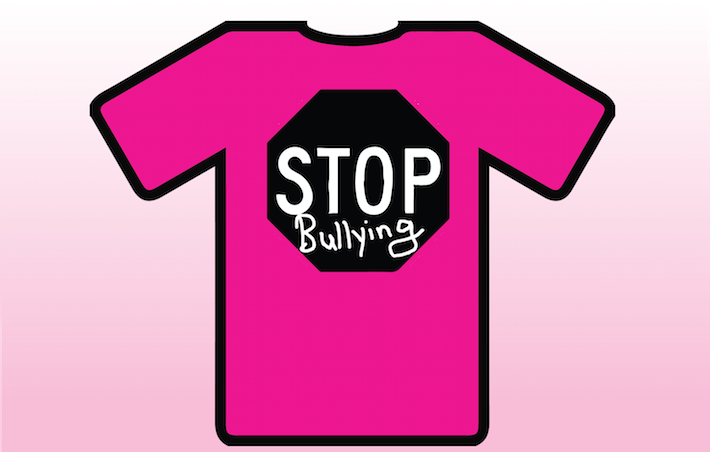
∼ by Joanne Sallay
It’s time to dig through your closet for your favourite pink ensemble, because Wednesday February 24th is Anti-Bullying Day, also called Pink Shirt Day. Students, parents and teachers are all showing their support and breaking out in some serious pink attire. This week, schools across the county will host assemblies, invite guest speakers, and initiate educational activities all designed to increase bullying awareness and promote positive student relationships.
Now, why pink? In 2007, two high school students from Nova Scotia—David Shepherd and Travis Price—took a stand against bullying. They did this by starting a pink t-shirt campaign after a grade nine boy at their school was harassed for wearing—you guessed it—a pink shirt. Their heroism has gone viral around the world and inspired this important day.
How do we emulate and model this incredible act to create safe learning environments for kids? As both an educator and mother, this topic resonates with me. I believe all children have the right to reach their full potential academically.
Here are eight suggestions from elementary and high-school teachers on what we can do to play our part and end bullying:
Go beyond one day – While special events like Pink Shirt Day present a spotlight on this important topic, it’s only one day. Bullying awareness, prevention, and intervention are important topics 365 days of the year. It’s important to have regular conversations with kids and be there to listen when they need a friendly ear.
Watch for warning signs – Parents and educators need to recognize and watch for signs on both sides, when students are being a victim or a bully. These warning signs could be anything from drastic changes in behavior to grades dropping uncharacteristically.
Be mindful of our language – Encourage positive language amongst peers. Sometimes students don’t realize that their jokes and language can be hurtful to others, including their friends.
Have empathy – While a natural reaction to bullying may be anger or a need to retaliate, showing compassion for others can be a useful strategy. Sometimes we need to put ourselves in the other person’s shoes and try to understand their situation.
Encourage students to get involved – Involve students in leadership opportunities that promote a positive school culture and strong student relationships. A few teacher favourites include The Toronto Argonauts’ Huddle Up Bullying Prevention Program, and Free the Children’s We Schools.
Get ideas online – While there are many great websites, here are just a few to gain further insight: http://www.erasebullying.ca/, http://pinkshirtday.ca/, http://dayofpink.org/
Read children’s books with strong messages – Children’s books play an important role in shaping our youth, teaching them about courage, kindness, and friendship. Storytelling is also a non-threatening way to open up honest dialogue and communication between students and the adults who love them. With so many great choices, here are a few of my favourites: Dear Bully of Mine, Noni Speaks Up and The Artist and Me. If you want further reading, here’s a list of more books to battle bullying.
“Don’t be a bystander, be an upstander” – Reassure children to speak up when something is not right and not to watch in fear or silence. It’s vital that students feel safe to communicate and talk to a trusted adult.
Let’s give a voice to those who have a hard time speaking up and show those who bully how hurtful their words and actions really are. We all play a part to encourage inclusion, respect and empathy amongst students.
